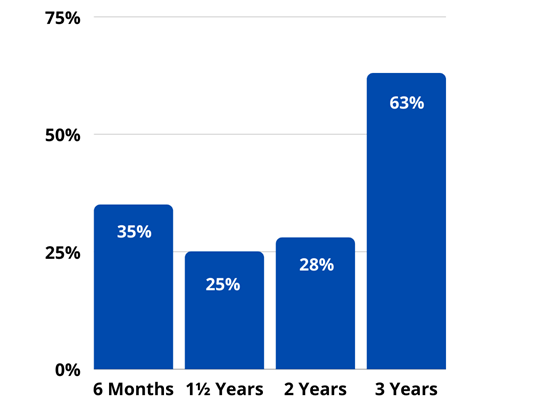23.2: Small Groups
- Page ID
- 142192
Defining Small Groups
Small groups means not exceeding the recommended number of infants and toddlers per room. PITC recommends between 6 to 12 infants and toddlers in one room, depending on the age of the children (Weinstock et al., 2012). In general, the younger the children, the lower the total number of children per room. For same-aged groups of infants under eight months of age, PITC recommends a maximum of six infants. For same-aged groups of children between 8 to 18 months of age, PITC recommends a maximum of nine children. For same-aged groups of toddlers between 18 to 36 months of age, PITC recommends a maximum of twelve children. For mixed-aged groups with children between birth to thirty-six months, when at least one child is 24 months, PITC recommends a maximum of eight children. The maximum group size recommendations from AAP are slightly different from PITC and they distinguish between family child care programs and center-based programs with group size recommendations (American Academy of Pediatrics, 2019). [1]
|
Age |
Group Size |
Adult:child ratio |
|---|---|---|
|
Birth to 8 months |
6 |
1:3 |
|
8 to 18 months |
9 |
1:3 |
|
18 to 36 months |
12 |
1:4 |
|
Age |
Group Size |
Adult:child ratio |
|---|---|---|
|
Birth to 36 months |
8 |
1:4 |
Many infant and toddler programs do not meet the recommendations for small groups. Figure# shows the percentage of infant and toddler programs that met group size guidelines (National Institute of Child Health and Human Development, 2006). Programs were most likely to meet group size recommendations with three year old children (63%) and least likely to meet recommendations with children ages 1½ through 2 years of age at 25% and 28% respectively. When children were six months of age, 35% of programs met the guidelines.

[1] Weinstock et al., (2012). Evaluation of the Program for Infant/Toddler Care (PITC): An on-site training of caregivers. Washington, DC: National Center for Education Evaluation and Regional Assistance, Institute of Education Sciences, U.S. Department of Education is in the public domain.
[2] Image by Todd LaMarr is licensed under CC by 4.0
[3] Image by Todd LaMarr is licensed under CC by 4.0
[4] Image by Todd LaMarr is licensed under CC by 4.0

